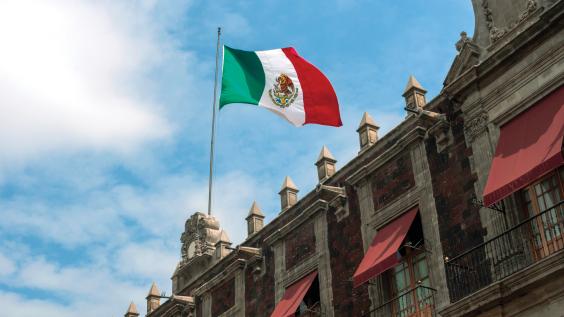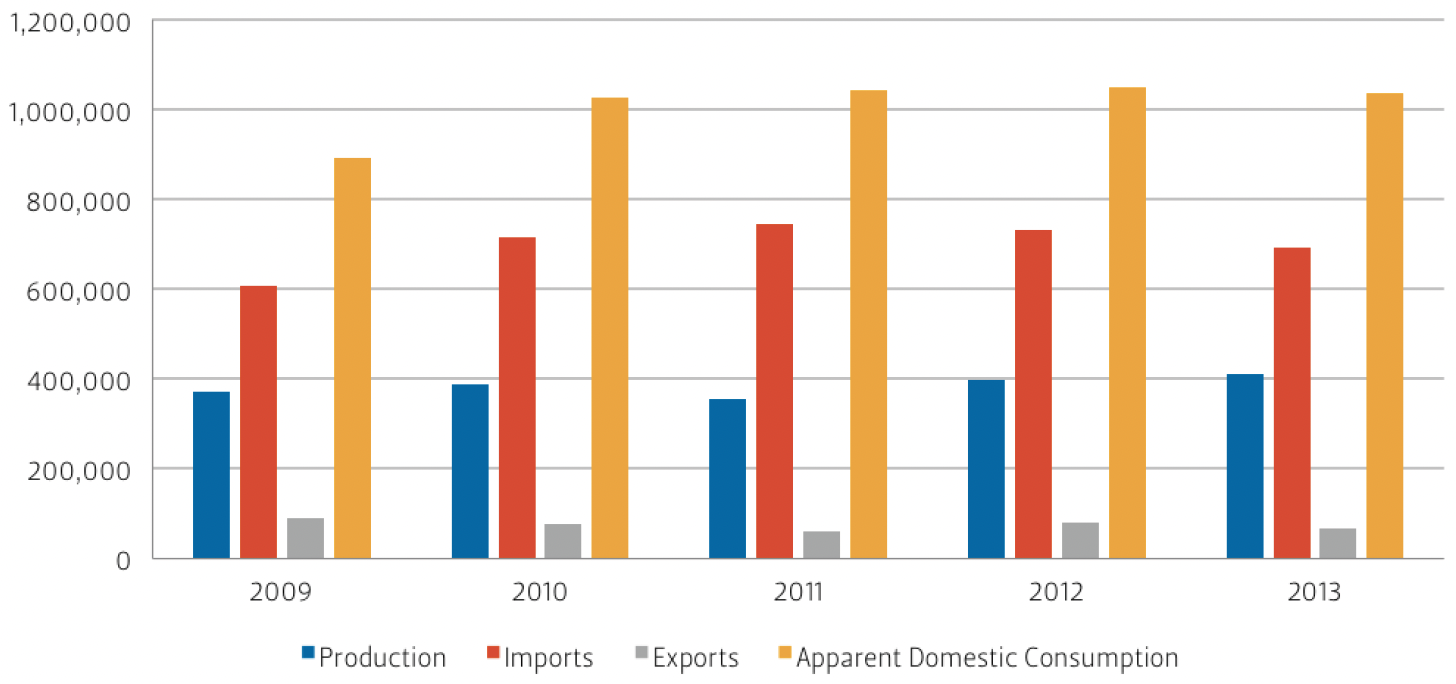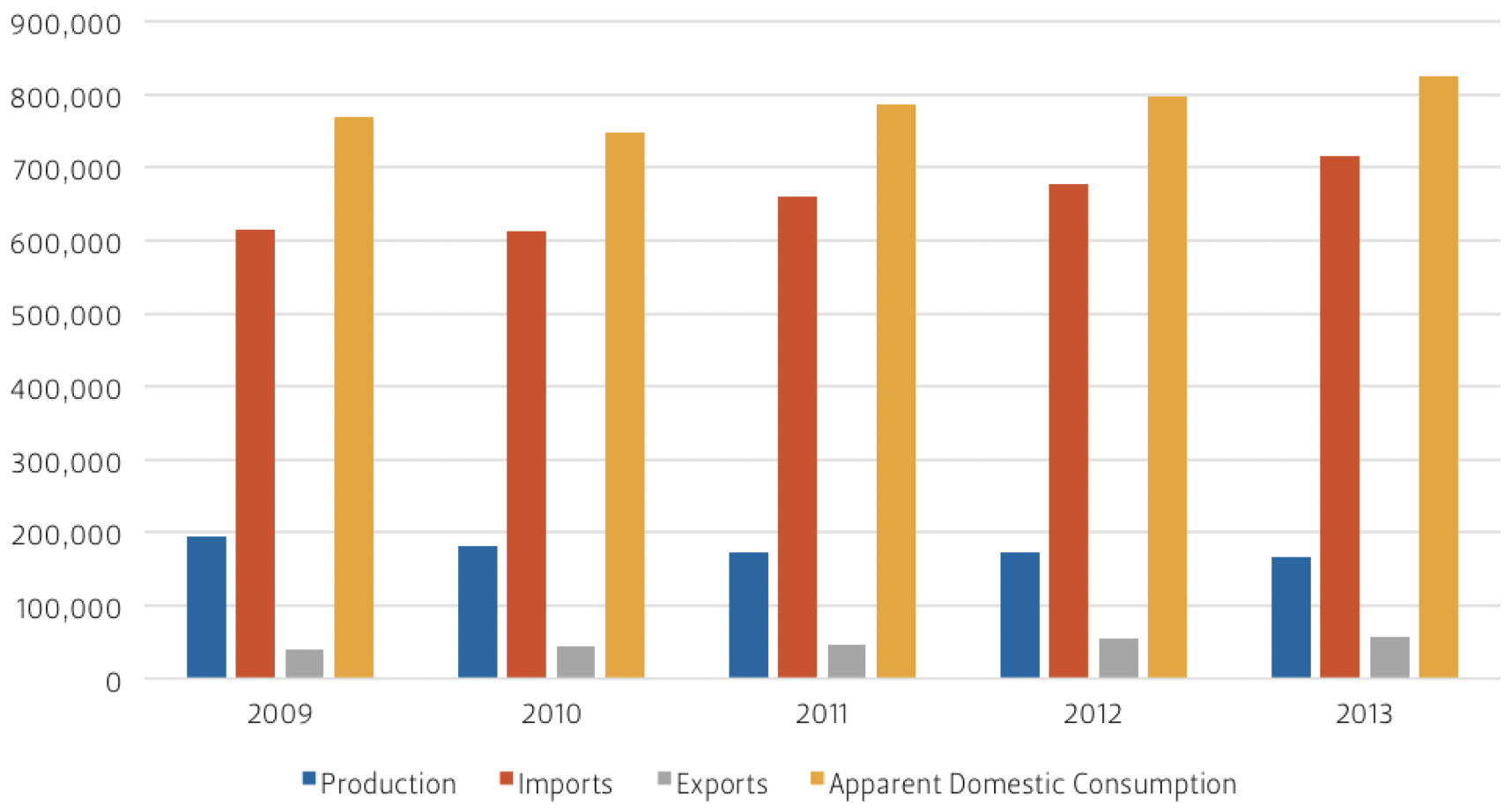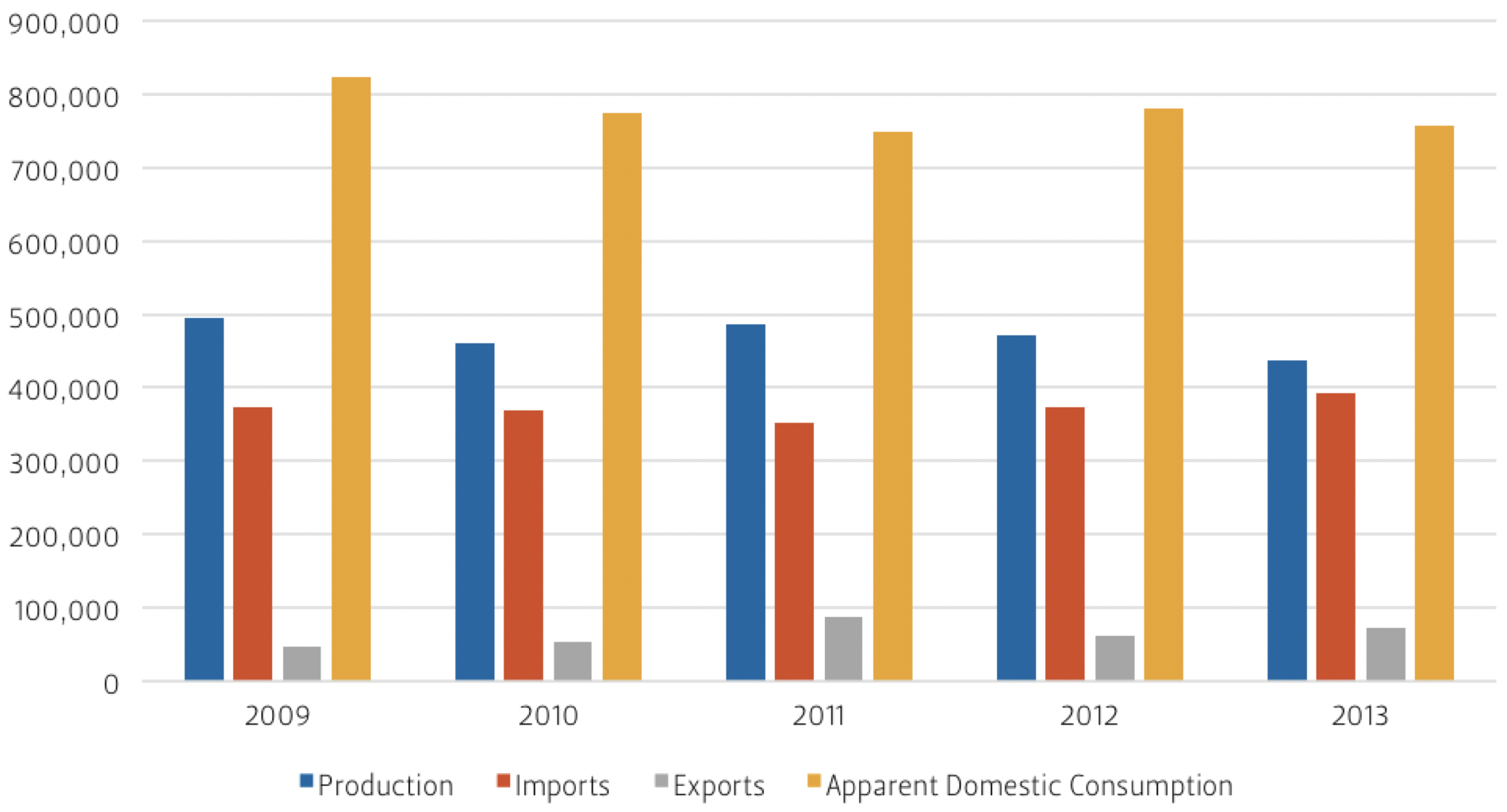Mexico’s Energy Reforms and Competitiveness in the Automotive Sector

Table of Contents
Author(s)
Adrian Duhalt
Former Nonresident Scholar in Mexico Energy StudiesShare this Publication
- Download PDF
- Print This Publication
- Cite This Publication Copy Citation
Duhalt, Adrián. 2015. Mexico’s Energy Reforms and Competitiveness in the Automotive Sector. Issue brief no. 06.25.15. Rice University’s Baker Institute for Public Policy, Houston, Texas.
Tags
Introduction
Since the approval of Mexico's energy reforms in December 2013, most of the policy-oriented efforts of the administration of President Enrique Peña Nieto have centered on putting in place the institutional and regulatory framework for the new energy sector. This step is unquestionably essential for the success of reforms. However, beyond paying attention to the implementation phase, it is equally important to begin to take note that the energy industry exerts an influence on a much wider economic landscape. The ripple effects of this energy opening will be felt far and wide and will touch many other economic areas. The country ́s automotive industry is no exception. This issue brief explores the relationship between the opening of Mexico’s energy sector and the future of the country’s automotive industry.
The Automotive Industry and Its Supply Chain
On the positive side, Mexico possesses certain characteristics that may help integrate the value-adding activities of the automotive chain. Some of these advantages have made Mexico a major car manufacturer. Productivity gains, wage inflation, and currency values have all been central advantages in enhancing the country's auto manufacturing competitiveness vis-à-vis other emerging economies like China and Brazil, where relative costs have escalated sharply. In the years ahead, this competitive advantage is projected to broaden, in part as a result of large investments in natural gas transport and storage infrastructure and lower electricity prices, which could result in local firms expanding production capacity and undertaking new investment. This, in turn, may force foreign firms to reassess their sourcing strategies and consider Mexico an even more viable alternative for locating future production facilities.1
The pace at which the automotive industry has expanded in recent years serves to illustrate the extent of Mexico’s manufacturing competitiveness. Since the start of Peña Nieto's term in December 2012, foreign investment in the automotive industry has reached more than $20 billion,2 making Mexico the world ́s fourth-largest exporter and the seventh-largest producer of cars to date.3 Recent announcements by carmakers indicate that this investment wave shows no signs of slowing down. By 2020, it is estimated that production will reach 5 million cars, up from 3.2 million in 2014.4 These are impressive figures. Mexico's share of light vehicle production in North America accounted for just 3 percent in 1985—a share that skyrocketed to almost 20 percent in 2014 and is anticipated to represent 25 percent in 2022.5
Despite its current boom in car manufacturing output and sales, the competitiveness of Mexico’s automotive industry is hampered by a limited domestic supply of different types of plastics. These include polyethylene and polypropylene,6 hydrocarbon-based raw materials that are used in the making of auto parts. A looming question is whether the government is doing what is necessary to attract even more investment in auto manufacturing. Policymakers should carefully consider how energy reforms can serve as part of a larger strategy to make Mexico’s workforce even more productive in car manufacturing and its native supplies even more competitive. This is to say, if energy liberalization is to have a serious impact on the rest of the economy, as promised by government officials, the design and execution of custom-made policies that build on the opening of the energy sector are fundamental. The implementation of the reform has to be thought through, therefore, on the basis of how it can enhance other sectors of Mexico’s economy, including the automotive industry.
The Automotive Industry as a Test Case
The growth that Mexico ́s automotive industry has experienced has failed to trickle down to every activity in the value chain. The sector is doing remarkably well in vehicle assembly and auto parts manufacturing.7 However, upstream activities, such as the supply of plastic resins—polypropylene (PP) and high density and low-density polyethylene (HDPE and LDPE)—necessary to produce car components, are among the weakest links in the Mexican segment of the automotive industry value chain. An ill-equipped domestic plastics industry has been unable to keep up with growing demand for plastic components, harming the country's ability to achieve a greater value share through the local production of automotive output.
A key to resolving this issue may be the recently implemented changes in the energy sector. How can the market and regulatory changes in Mexico’s energy sector foster greater competitiveness in the automotive industry? Two fundamental paths are easily visible. The first is related to investments in natural gas infrastructure and lower electricity prices.8 The second is to foster production of natural gas-based petrochemical inputs needed to encourage production of plastic resins that the automotive and auto parts industries demand. Both of these are now within reach, in part thanks to energy reform. We break down each of these below.
Gas Transport Infrastructure and Electricity Prices
Mexico has embarked on a mission to expand its natural gas transport capabilities to ensure a more adequate supply. Emilio Lozoya, CEO of Petróleos Mexicanos (PEMEX), estimates that the network of pipelines will grow from 11,142 km to 19,436 km by the end of the current presidential term (2018)—a remarkable rate of growth that will involve investments totaling about $18 billion dollars.9 This new infrastructure is fundamentally designed to bring less expensive gas from the United States to supply the industrial processes of Mexico’s manufacturing firms. Car makers, as well as many other industries, can benefit from this natural gas pipeline and import expansion. The first signs of this interconnectivity are already evident on the ground, and many of them link Texas with Mexico. Natural gas pipeline projects such as the Los Ramones, which runs through five Mexican states from Agua Dulce, Texas, to Apaseo El Alto, Guanajuato, are an important factor behind decisions by automakers to locate production facilities in Mexico.10
Figure 1 — Mexico’s Polypropylene Trade, Production and Consumption (Metric Tons)

Furthermore, the impact of the new natural gas infrastructure goes beyond supply. The automotive industry can also enjoy lower electricity tariffs thanks to the fact that a) natural gas prices in North America are competitive11 and b) Mexico’s energy mix is shifting to more use of natural gas for power generation. The Federal Electricity Commission (CFE) has made public that electricity prices for the industrial sector in May 2015 fell between 23 and 31 percent from a year earlier.12 For June 2015, electricity tariffs could be lowered as much as 35 percent in comparison with those in June 2014.13
Petrochemical and Plastics Resins Production
Figure 2 — Mexico’s High Density Polyethylene Trade, Production and Consumption (HDPE, Metric Tons)

Note Imports accounted for 803,563 metric tons in 2014, according to the UN Comtrade Database.
The second route by which energy reforms may benefit the automotive industry is by increased production of petrochemical inputs that could incentivize the manufacturing of plastic resins.14 For example, the propylene output at PEMEX—the only domestic producer of the inputs needed in the production of polypropylene,15 a type of plastic used in the manufacturing of auto parts—is insufficient to meet demand. This is clearly one factor discouraging prospective investment in Mexico. The automotive industry is highly dependent on imports of polypropylene, which represented more than 69 percent of overall apparent domestic consumption from 2009 to 2013—equivalent to annual imports averaging $1,208 million throughout the same period.16
A similarly complex situation exists regarding high-density and low-density polyethylene, plastic resins similarly used in the manufacturing of auto parts. In the particular case of HDPE, Figure 2 illustrates the extent to which domestic industrial users are dependent on imports to secure supply. In other words, PEMEX, the only producer to date, managed to meet just 16.5 percent of the requirements of the domestic market17 in the 2009-2013 period, while the remaining 83.5 percent was met through imports, which accounted for $1,179 million in 2014—an increase of 50 percent in relation to 2010 imports.18
In examining the same indicators for low-density polyethylene, it can be seen that PEMEX managed to meet a larger share of apparent domestic consumption between 2009 and 2013—after exports, the figure stands at 52.2 percent, while the outstanding 47.8 percent was supplied by way of imports.19 This illustrates that Mexico has relatively greater capability to produce LDPE, something corroborated by the fact that imports grew 21.8 percent between 2010 and 2014—from $578.8 million to $705.1 million.20 There is nonetheless much room for further expansion of the national supply of LDPE.
In that respect, a somewhat positive note is that figures concerning imports of HDPE and LDPE may decrease in the near future. Etileno XXI, a large petrochemical project situated in the south of Veracruz and expected to become operational in the second half of 2015, will have the capacity to produce up to 750,000 metric tons of HDPE and 300,000 metric tons of LDPE.21 However, this will take place gradually.22 Mexico will continue to import a great share of its polyethylene needs.23
The above scenarios lead to the following questions: What exactly has discouraged increases in polyethylene/ polypropylene production in Mexico? Why has Mexico failed to integrate its petrochemical industry with related manufacturing activities? Both questions may in part be addressed by observing that similarly short-sighted government policies have also held back the development of the petrochemical and plastics industries, which have been hampered by an inadequate supply of feedstock. However, it is also certain that Mexico has lacked adequate public policies to stimulate the growth of its own plastics industry. The recent energy reform may help, but it may be insufficient without further public policies to stimulate national supply growth.
Final Remarks
Figure 3 — Mexico’s Low Density Polyethylene Trade, Production and Consumption (LDPE, Metric Tons)

Note In 2014, imports stood at 390,218 metric tons, according to the UN Comtrade Database.
In October 2014, Mexico’s president decreed the creation of a specialized unit within the Ministry of Economics to promote, in consultation with the Ministry of Energy, the development of energy-related value chains. One of the aims of his action was to link production of hydrocarbon-based raw materials with local user industries.24 This move was welcomed by many who understand the necessity of crafting strategies to enhance regional capabilities. In states like Puebla, for example, the automotive industry is growing and encompasses an agglomeration of car and auto parts makers; an increasing supply of natural gas (thanks to the construction of more pipelines) could encourage investment in plastic resins, eventually leading to the strengthening of local value chains. The same might occur in other states where (new) natural gas infrastructure coexists with the presence of manufacturing activities. These include Querétaro, Guanajuato and Mexico State, among others.
How to foster production of plastics in order to make Mexico’s automotive industry even more competitive is one of the many questions that the Ministry of Economics ought to be currently addressing. Much more remains to be done.
Endnotes
1. Harold Sirkin, Michael Zinser, and Justin Rose, The Shifting Economics of Global Manufacturing: How Cost Competitiveness Is Changing Worldwide (Boston, MA: The Boston Consulting Group, Inc., 2014), https://www.bcgperspectives.com/content/articles/lean_manufacturing_globalization_ shifting_economics_global_manufacturing/.
2. It includes new manufacturing facilities and announcements of investment projects.
3. Sonia Corona, “In 2014 Mexico overtook Brazil as top maker of cars in Latin America,” El País, July 17, 2014, http://elpais.com/m/elpais/2014/07/17/inenglish/1405605087_317920.html.
4. Presidency of Mexico, “Las Inversiones en México Reafirman la Confianza que hay en Nuestro País: Enrique peña Nieto” [Investments in Mexico Reaffirm the Existing Trust in Mexico: Enrique Peña Nieto], http://www.gob.mx/presidencia_cms/prensa/las-inversiones-en-mexico-reafirman-la-confianza-que-hay-en-nuestro-pais-enrique-pena-nieto.
5. Andy Sharman, Jude Webber and Kana Inagaki, “Ford Investment Highlights Mexico´s Booming Carmaking Sector,” Financial Times, April 16, 2015.
6. Used in automotive bumpers, exterior trims, instrument panels, door panels, consoles, under-hood parts such as fan shrouds, engine covers and battery cases. See http://www.exxonmobilchemical.com/Chem-English/ProductsServices/polypropylene-resin-automotive.aspx.
7. As of 2012, Mexico is the world´s 5th largest manufacturer and exporter of auto parts. See http://mim.promexico.gob.mx/work/sites/mim/resources/LocalContent/356/3/131018_FC_ autopartes_ ES_VF.pdf.
8. For detailed information on electricity prices, see http://egob2.energia.gob.mx/portal/electricidad.html.
9. McLarty Lecture Series, “A conversation with Emilio Lozoya,” April 21, 2015, http://bakerinstitute.org/events/1681/.
10. Petróleos Mexicanos (PEMEX), “Inaugura el Presidente de la República la Primera Fase del Gasoducto Los Ramones” [Mexico’s President Inaugurates the First Phase of the Los Ramones Gas Pipeline Network], (press release, December 2, 2015), http://www.pemex.com/saladeprensa/boletines_nacionales/Paginas/2014-122_nacional.aspx.
11. Henry Hub average price in May 2015 stood at $2.7975 per million Btu. For detailed information see http://www.eia.gov/dnav/ng/hist/rngwhhdW.htm.
12. Federal Electricity Comission (CFE), “Continúa en Mayo la Reducción de Tarifas Eléctricas en México” [The reduction in the prices of electricity tariffs will continue in May], (press release, May 5, 2015), http://saladeprensa.cfe.gob.mx/boletines/show/8224/.
13. Federal Electricity Comission (CFE), “Continuará en Junio la Reducción de Tarifas Eléctricas en México” [The reduction of electricity tariffs will continue in June in Mexico], (press release, May 31, 2015), http://saladeprensa.cfe.gob.mx/boletines/show/8230/.
14. María del Pilar Martínez y Lilia González Velázquez, “Industria Próspera con un Talón de Aquiles” [Industry Grows with an Achilles Heel], ALTONIVEL, February 12, 2015, http://www.altonivel.com.mx/49109-autopartes-industria-prospera-con-un-talon-de-aquiles.html.
15. In Mexico, a subsidiary of Grupo Alfa, a Monterrey-based conglomerate, appears to be the only polypropylene producer, according to its website. See http://www.indelpro.com/irj/portal/anonymous?Navigati onTarget=navurl://4095dda762d8058aab4c8bc8eb6bf6f6.
16. National Association of the Chemical Industry (ANIQ), “2014 Statistical Yearbook,” http://www.aniq.org.mx/anuario/2014/index.html.
17. When exports are removed from the equation.
18. UN Comtrade Database (United Nations Commodity Trade Statistics Database).
19. National Association of the Chemical Industry (ANIQ), 2014 Statistical Yearbook, http://www.aniq.org.mx/anuario/2014/index.html.
20. UN Comtrade Database (United Nations Commodity Trade Statistics Database), 2014, accessed May 20, http://comtrade.un.org/data/.
21. Etileno XXI is a joint venture between Braskem, a Brazilian petrochemical firm, and Mexico´s Idesa. See http://www.braskem.com.br/site.aspx/Braskem-Perfil-MEX.
22. Media outlets reported that Etileno XXI will commence producing 100,000 metric tons, reaching 700,000 metric tons in 2018. See Karol García, “Clientes de Braskem Idesa esperan apertura de Etileno XXI,” [Clients of Braskem Idesa await the opening of Etileno XXI], El Economista, December 30, 2014, http://eleconomista.com.mx/industrias/2014/12/30/clientes-braskem-idesa-esperan-apertura-etileno-xxi.
23. The National Association of the Chemical Industry estimates Mexico´s apparent consumption of both types of polyethylene at 1,582,870 metric tons. However, Roberto Bischoff, Director General of Braskem Idesa (Etileno XXI), states that the country´s consumption is about 2 million metric tons.
24. Government of Mexico, “Decreto por el que se reforman, adicionan y derogan diversas disposiciones del reglamento interior de la Secretaría de Economía” [Decree by which several internal norms of the Ministry of the Economy are reformed, enhanced and abrogated], October 31, 2014, http://www.dof.gob.mx/nota_detalle.php?codigo=5366678&fecha=31/10/2014&print=true.
This material may be quoted or reproduced without prior permission, provided appropriate credit is given to the author and Rice University’s Baker Institute for Public Policy. The views expressed herein are those of the individual author(s), and do not necessarily represent the views of Rice University’s Baker Institute for Public Policy.


